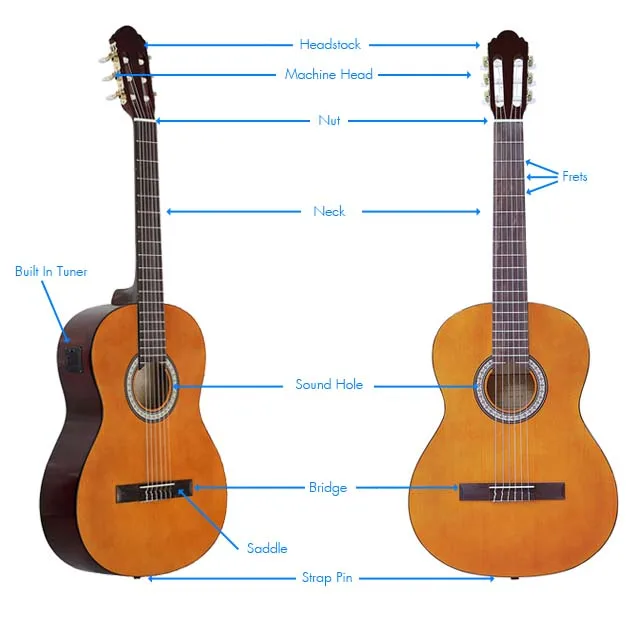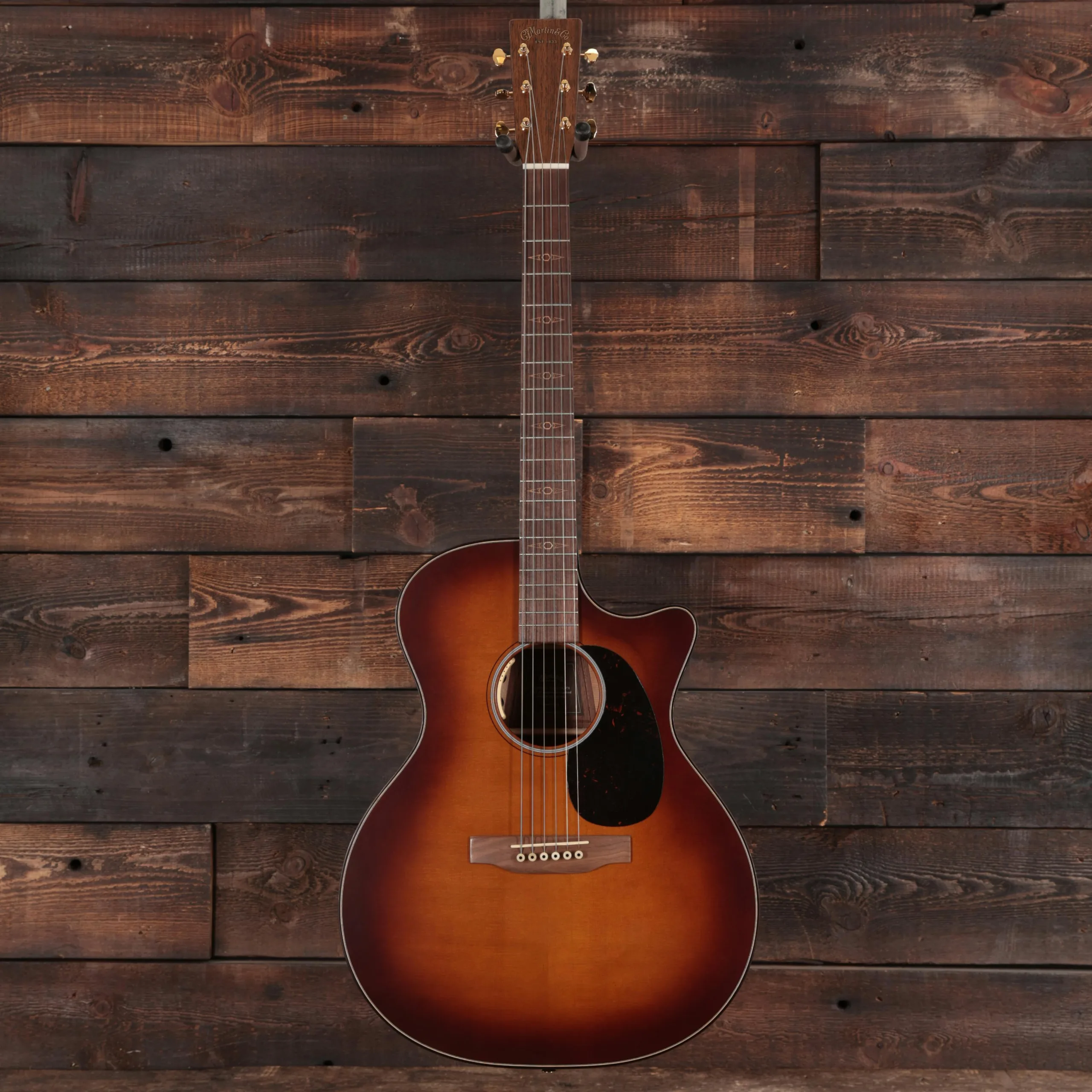Have you ever wondered what the top of an acoustic guitar is actually called? It’s not just a wooden surface, but a key element that contributes to its unique sound and playability. As a beginner guitarist myself, I was curious to learn more about this often overlooked part of the instrument. So let’s dive in and discover everything there is to know about the top of an acoustic guitar.
In this article, we’ll delve into the different parts that make up the top of an acoustic guitar, including its materials, construction, and how it affects tone and resonance. By understanding these components, you’ll have a better appreciation for your instrument and be able to make informed decisions when buying or caring for one. So grab your guitar and let’s get started!
So, What is the top of an acoustic guitar?
The top of an acoustic guitar is called the soundboard or the top plate. It is the part of the guitar that amplifies and projects the sound produced by plucking or strumming the strings. The soundboard is typically made from a thin piece of wood, such as spruce or cedar, that has been carefully selected for its resonant qualities.
Aside from the soundboard, other important parts of an acoustic guitar include:
1. Neck – This is where you place your fingers to fret different notes and chords.
2. Fretboard – The smooth surface on top of the neck where you press down on strings to produce different pitches.
3. Headstock – Located at the end of the neck, this holds tuning pegs which adjust string tension.
4. Tuning Pegs – Used to tighten or loosen strings in order to tune them to specific pitches.
5. Bridge – Holds and anchors one end of each string onto the body of the guitar.
6. Saddle – A small strip located on top of bridge which helps transmit vibrations from strings into body for amplification.
7. Nut – Located at base of headstock, it guides strings towards tuners and keeps them evenly spaced.
Knowing these parts can help you better understand how an acoustic guitar works and how to properly maintain it for optimal performance and longevity. So next time someone asks what’s on “top”of an acoustic guitar, you’ll have all your bases covered!
Understanding the Terminology: The Soundboard of an Acoustic Guitar
The soundboard, often referred to as the “face” of an acoustic guitar, plays a crucial role in shaping the instrument’s sound. This thin wooden plate vibrates when you strum or pluck the strings, transforming those vibrations into rich tones. Crafted usually from spruce or cedar, it combines strength with lightweight properties that enhance resonance and sustain. These materials are chosen for their unique abilities to produce clear trebles and deep basses. Skilled luthiers meticulously select and carve these woods to ensure they bring out the best qualities of each guitar.
You might notice small details like bracing patterns underneath the soundboard. These hidden supports not only reinforce structural integrity but also influence tonal characteristics. Different guitars have varying bracing styles – X-bracing is quite common for its balanced tone across frequencies while other patterns can emphasize either lows or highs more distinctly. The placement of these braces affects how widely and freely the soundboard can move, which directly impacts volume and richness of sound produced by your strumming hand.
To make it simple:
– The wood type enhances specific tonal qualities.
– Bracing patterns affect vibration freedom.
Thus, what seems like a mere decorative element holds profound impact on musical expression.
With every note played, you’re essentially hearing both nature’s voice through fine wood selection and human ingenuity in design choices working harmoniously together.
Exploring Different Materials Used for the Top of an Acoustic Guitar
When you’re picking out an acoustic guitar, one of the most important aspects to consider is the material used for the top. This part of the guitar significantly impacts its sound and overall feel. The top can be made from various types of wood, each offering a unique tonal quality.
Spruce is a popular choice, often praised for its bright, clear tones. It’s like having your own built-in amplifier because it projects sound really well.
Cedar offers a warmer tone that’s perfect if you enjoy finger-picking styles; it’s softer and more responsive to lighter touches.
Mahogany has a distinct, earthy quality that provides a robust midrange response—great for blues or folk music.
Here’s why these woods matter:
- Spruce: It’s lightweight but strong, making it ideal for producing loud sounds without sacrificing clarity.
- Cedar: Known for its quick response time which makes it suitable for intricate playing styles.
- Mahogany: Offers durability with mellow undertones and is excellent at balancing highs and lows.
So next time you’re in the market or just curious about guitars, pay close attention to what kind of wood tops are available—you might find that perfect match that elevates your musical experience!
Read also: what guitar does bocchi use

How Guitar Construction Techniques Influence the Sound and Resonance
When you dive into the world of guitar building, you’ll find that every detail matters in shaping its voice. Take the choice of wood, for example. Makers often use spruce or cedar for the top because they resonate beautifully when plucked or strummed. The back and sides might be made from mahogany or rosewood, each bringing a distinct flavor to the sound.
Spruce tends to give bright and clear notes, while cedar adds warmth and richness. Similarly,
- mahogany: Known for its punchy mid-tones.
- rosewood: Offers a deeper bass response.
Moreover, how these pieces are put together can make all the difference. Imagine tiny braces hidden inside the body; they might seem insignificant but play a huge role in sound projection and durability. Luthiers carefully shape these braces to balance strength with flexibility.
The thickness of the guitar’s top also affects its tone—a thinner top will vibrate more freely, resulting in better resonance but potentially compromising structural integrity over time.
Then there’s the neck attachment method—whether it’s bolted on or glued, it impacts sustain (how long notes ring out). A glued neck tends to provide more natural resonance since there’s uninterrupted contact between parts.
In essence, even though guitars may look similar at first glance,
each part quietly contributes to creating an instrument with unique voice quality.
Examining How the Top of a Guitar Affects Tone Quality
People often overlook the top of a guitar, but it plays a crucial role in how the instrument sounds. The top, or soundboard, is usually made from different types of wood like spruce or cedar. Each type has its own unique characteristics that impact tone quality. For instance, spruce tends to deliver a bright and clear sound that’s perfect for playing intricate melodies. In contrast, cedar offers a warm and rich tone that adds depth to softer music styles.
Not only does the type of wood matter, but also how it’s constructed can make all the difference. A well-crafted soundboard will resonate better when you strum or pluck the strings. Some luthiers use specialized techniques such as scalloped bracing to allow for more flexibility and vibration in the top wood. This results in a fuller sound with greater clarity across different notes.
- Spruce: Bright and clear tones
- Cedar: Warm and rich tones
- Scalloped Bracing: Enhances resonance
So next time you listen to someone play guitar—or if you’re picking one out yourself—pay close attention to the details of its construction because every element contributes uniquely to what you hear.
You may also like: What is the biggest piano in the world
Appreciating Your Guitar’s Design and Craftsmanship
Guitars are more than just instruments; they are works of art. When you hold a guitar, take a moment to really look at it. Notice the smooth curve of the body, the way light dances on its polished surface. Each piece has been carefully chosen and shaped by skilled hands. The neck is often made from sturdy woods like maple or mahogany, providing both beauty and strength. The frets are meticulously placed to ensure perfect pitch as your fingers glide over them.
The craftsmanship doesn’t stop there. Consider the intricate inlays on the fretboard—whether simple dots or elaborate designs, each adds character to your instrument. The pickups and electronics inside bring your music to life with stunning clarity and richness. Think about how every screw, nut, and bolt fits together seamlessly for that flawless finish.
- The wood grain telling a story
- The glossy sheen reflecting years of tradition
- The sound hole inviting melodies
All these elements combine into something truly special.
Next time you play your guitar, appreciate these details that make it unique.
A little gratitude goes a long way toward forging a deeper connection with this beautiful creation.

